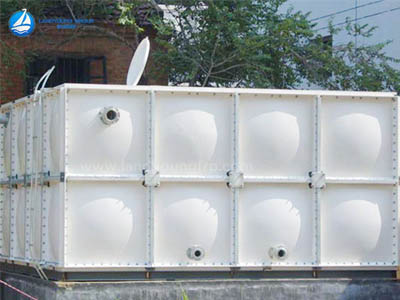sales@landyounggroup.com
+86 133 2318 2255
Storage tanks are purpose-built storage units used for commercial and residential purposes. Tanks can store water, oil, hazardous waste, chemicals and other substances that need to be stored for longer periods of time in factories or homes. However, the fact is that different tanks have different uses. Its use depends on the materials used in its manufacture.
In this blog, we have highlighted the materials used to make some of the most common tanks, the most suitable materials for making water storage tanks and the materials previously used to make water tanks.
Underground Fiberglass Tanks - as the name suggests, these underground storage tanks are made from corrosion-resistant fibreglass. Fibreglass is versatile and is used by many commercial industries.
Carbon Welded Steel Tanks - These are water storage tanks made from carbon welded steel. These tanks are strong and durable and are unaffected by Lyme leaching.
Above Ground Storage Tanks - These tanks are made from concrete or fibreglass. Above ground storage tanks may not have a high storage capacity, but they can easily serve their purpose. Typically, they are used to store corrosive water, including waste, drinking water and rainwater storage.
Polyethylene tanks - they are made of plastic and are ideal for people on a tight budget who do not need a large capacity tank. Rainwater collection is one of the common uses of polyethene tanks.
Stainless Steel Water Storage Tanks - As the name suggests, these tanks are made from stainless steel. Without a doubt, these tanks are some of the most versatile tanks on the market today.

In the 70s and 80s, all industrial tanks were made of galvanised steel - a zinc coating that protected the steel from corrosion. These water tanks could hold around 30,000 litres to millions of litres of water.
In general, estimates of the life of fibreglass tanks indicate that they have the longest life span, averaging thirty to forty years. The next longest life expectancy is for fibreglass bleach tanks, which can last between ten and twenty years. Fibreglass acid and metal reaction tanks will not last more than five to ten years. There are many precautions you can take if you want to ensure that your tank lasts the longest. Some important things to remember are to ensure that your fibreglass tank is checked regularly.
A general rule of thumb is that the more corrosive the chemicals are stored, or the harsher the conditions in which they are kept, the more frequently the tank should be inspected. If the tank is in harsher conditions, an annual inspection is recommended. It is also strongly recommended that you do not deviate from the specifications of the fibreglass tank. Switching chemicals or environmental conditions without modifying the tank will shorten the life of the tank.
If you want to get more information about the water tank material, welcome to contact us today or request a quote.